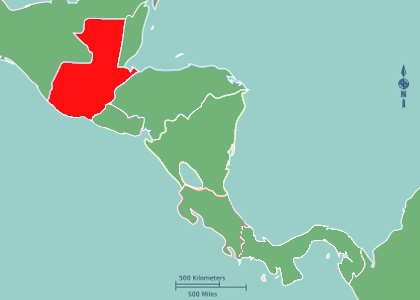
Circle the area on this map

D. The ancient Mayan civilization at its peak 1,200 years ago encompassed all of Guatemala and extended hundreds of miles north and west into what what is now Mexico. Mayans also covered all of Belize to the northeast and ruled parts of Honduras to the east and El Salvador to the southeast of Guatemala.
C. The administrative, political and military center of the Inca Empire was located in Cusco in modern-day Peru. It was the largest empire in pre-Columbian America, and possibly the largest empire in the world in the early 16th century when European conquerors arrived and destroyed their civilization.
A. The Andes are the longest continental mountain range, running about 4,300 miles from north to south in South America. The Inca Empire covered parts of the modern nations of Peru, Chile, Colombia, Ecuador, Bolivia and Argentina.
B. There are an estimated 7 million Maya living in the same area once ruled by their ancestors. Some are quite integrated into the majority hispanicized Mestizo cultures of the nations in which they reside, while others continue a more traditional, culturally distinct life, often speaking one of the Mayan languages as a primary language.